
The First and Only Weekly Online Fanzine Devoted to the Life and Works of Edgar Rice Burroughs Official Edgar Rice Burroughs Tribute Site Since 1996 ~ Over 15,000 Webpages in Archive |

The First and Only Weekly Online Fanzine Devoted to the Life and Works of Edgar Rice Burroughs Official Edgar Rice Burroughs Tribute Site Since 1996 ~ Over 15,000 Webpages in Archive |

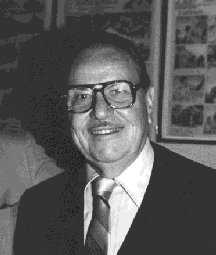
MEET BURNE HOGARTH An Informal Chat With The World’s Greatest Comics Artist By Howard Zimmerman |
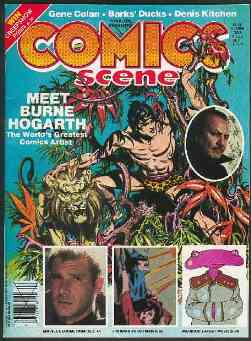 |
![]()
Burne Hogarth took over the Tarzan syndicated newspaper strip from the great Hal Foster in 1936. He was only 25 years old at the time, but he had already been a professional cartoonist/illustrator for 10 years. Hogarth helmed the strip for a decade, creating an awesome and unique visual mythos. He helped take Tarzan out of the cult closet and firmly established the ape-man as one of the true greats of American heroic literature and mythology. Although this was just one achievement of a long, successful career, recognition was a long time coming for Hogarth. Today, however, he is generally acknowledged as ‘the greatest living artist of the comics.”We caught up with Hogarth at home in southern California and chatted with him about his career, his contributions to the art world and his views on dynamic illustration. ~HZ
CS: Give us a capsule history of your career and early background. You graduated from the Chicago Art Institute?
BH: No, I didn't, as a matter of fact, I went to the Institute but it was only a kind of supplemental activity while I was really in the process of going to high school and at the same time doing art work.
I went to the Art Institute, started Saturday classes, at the age of 12. My father thought that I had sufficient material to be able to enroll in classes like that and so he took down a bundle of stuff one day, on a Saturday, and said “Let's go see what they will think about this.” And they accepted me – so that’s how my training began. Later I went to the Institute taking special courses, but I didn’t enroll in any formal classes. I couldn’t because we were not an affluent family and (the world) was headed into what was later to be known as the Great Depression.
CS: What were you interested in learning?
BH: Well, to put it simply. I wanted to be an artist, but at the same time, I was committed very early to doing cartoons. You see, in our home we had a connection with artists, because they used to come to the house – it was a kind of center of artistic concerns. It was almost like what might have happened perhaps in other days… in Paris, let’s say, like in a salon, only it was just our home. The point is, however, I would hear about the lives of artists and other greats in past times, especially in the 19th century. You couldn’t earn a living, if you went by the lives of the post-impressionist painters. I learned that very quickly.
So it occurred to me that cartooning might be one way to earn a living, and I would also set some time aside to do painting and artwork.
CS: When did you know you had a talent for cartooning?
BH: Very early, when I was a kid, about four. My father would sit and design furniture and cabinets – he was a carpenter and cabinet maker – and I would ask for my own piece of paper and pencil. And when I would say, “What should I draw?” he would push a cartoon under my nose and say “Here, draw this.” So the cartoon became a kind of focus of attention.
CS: What happened after you left the Art Institute?
BH: I enrolled in the Academy of Fine Arts in Chicago. There I studied further drawing and then cartooning as another side of that. That’s when I met a cartoonist who was working for a syndicate and other people who were working for newspapers, and we used to get heavily into what syndication was all about… deadlines and magazines and doing samples and taking them around. I did gags and editorial cartoons, illustrations and that was all part of my portfolio.
I used to take this around and get some jobs in magazines and at the same time worked at odd jobs like driving a truck, selling newspapers and shoes – nothing was too high, too low, or too intermediate to do, because there was obviously an economic necessity.
One of the people I met at the Academy introduced me to one of the syndicates. I worked (for them) in his studio and I was his assistant. I was just an apprentice. I used to come in and sweep up. I learned lettering and I learned also there’s something about the craft of doing work on deadlines. And more than anything else I learned how to use pen, brush, different media and all sorts of things in a very professional way. Maybe two and a half, three years later I sold my first feature to Bonnet Brown.
CS: Which one was that?
BH: Ivy Hemmanhaw. It was one panel, humorous gags about Americana. I was just 18. It lasted about a year and then I went on to teach in the Emergency Educational Program, which came along about the time I was 20-21, and I went to school, too. I went to Northwestern University, the University of Chicago, and studied psychology, anatomy, sectional anatomy, and then things altered. The Depression got worse and under the urging of friends who had relocated to New York, I made my foray into the field in New York, into the syndicate field, very quickly – and that became the start of a whole new and different part of my life.
CS: You worked for the King and McNaught syndicates, worked with Charles Driscoll on his Pieces of Eight strip. How did you get the job of doing Tarzan.
BH: I was working for the Johnstone Agency. I did comic ads, and from there I learned there was an opening for a possible comic book or comic strip in United Features. And this was back in 1936. I had a couple of cartoons and ready-to-be-syndicated strip ideas which I wanted to submit. The editor looked at it and he said, “Well, we’re thinking of doing a comic book” – he said it was a kind of new idea. Well, it was a new idea then. It was the beginning of the idea of the comic book. But then he said they were contemplating changing one of their major features, and he said “Perhaps you’d like to take a crack at it, we’re simply gathering samples together.” I said I’d like to listen to anything you’d like me to do. So he trotted out some samples of Harold Foster’s Tarzan. He said “Harold Foster is going to be leaving Tarzan – he’s going on to do his own feature and we’re looking to see who can replace him. Maybe you’d like a crack at it.” Well, I was bowled over by this. I was literally bowled over, because Foster was really a god of the comics. But he gave me some material and a script. He said here are some pages that show what (Foster) did in relation to the script. He said “We want you to do this one, and you are going to do it on your own.” So I took it home and two weeks later I returned with a finished page. He looked at it and he said “Okay, we’ll let you know.”
I just did the page according to Foster’s samples – which were of course pages with rough notes. Anyway, what happened was that, I hadn’t realized it, but there were something like 11 other artists who were competing for the job. I was interviewed and he called me about a week later and he said, “Well, I think the job is yours.”
CS: What was it about your work that sold them.
BH: There was a continuity in the style, in the black and while and in everything else. But the more important thing was in the design of the page. I didn’t realize at the time that Foster had done this page – they told me he hadn’t – but when they laid down the pages side by side…. The editor told me that he walked into the syndicate and said, “Well, Foster sent in a page, what do you think of it?” And the guy looked at it and he scanned it from top to bottom. He said, “It looks all right to me.” He says, “Print it.” And at that point, the editor said, I knew we’d won the game. And so they hired me.
CS: You started out doing the Sunday pages?
BH: Yes. And, as I mentioned earlier, it was my intention that I would do the comics for a living, give it the damned best I could. I’d spend three, at the most four, days on the cartoon, make a good living out of it, if possible, and use the rest of the week for my own stuff – which is what I continued to do as a matter of fact ever since that time. I never let myself become so infected by the habit of doing hack work and multiple hack work that I would just simply forget what the heck art was all about.
Frequently when I talk to some artists they expatiate on ideas, like, you know, “You take some of these new artists and they have all kinds of time that they spend on one page. They’ll spend two weeks, three weeks on a page of stuff, and they give it whatever they think they are giving, but you know the field demands so much intensity that if they can’t get production, what good are they?” And I say, “Yeah, but what good is the art if you have to give it everything you have in the first five seconds and you haven’t got time to think about it – or even look beyond whatever it is that you want it to be?”
I say there is something admirable about those people who merely want to linger over it and polish it and sort of acculturate themselves with the whole process of the field, rather than to simply ingest it as if it were a thing that you eat and get out of your body and get rid of the refuse. I said “That’s not art to me.” And I admire the people who are capable… well, you can name a few people... there’s (Michael) Kaluta, who likes to linger over his work, and there are others, like Barry Smith.
CS: How long did you linger over the Tarzan Sundays?
BH: Well, at first it took me about five, maybe six days a week. You know I was really walking a tightrope. Here I’m dealing with a guy who’s a seasoned editor, who had been an illustrator himself for many years. And I was just a fledgling and I had to go try to equal the output of a guy like Harold Foster, whom I read as a kid and just loved – fell in love with the kind of dramatics, the dynamics and all the rest that went on in that kind of projection drawing. Because where else did anybody ever draw as well as that just by sitting down and spinning it off the top of his head? You know, that’s really virtuoso stuff. Most people don’t comprehend the difficulty of the comic strip. There’s nothing to copy, nothing to follow; at the same time the thing is always on the move and always realistic. I never used a model and I’m pretty sure that Harold Foster never did.
CS: How many years did you do the Sunday continuities?
BH: Well, I believe I left the strip in ’46.
CS: So we’re talking about a 10-year period. Did you get involved in the School of Visual Arts then?
BH: That happened in ’47. I started the Academy of Newspaper Art first and then the Cartoonists and Illustrators School and son on. And then I founded the SVA with a person who is an administrator with the Veteran’s Administration – an English teacher who had no art training at all.
CS: Why did you leave Tarzan after 10 years?
BH: Very simply, you’re talking about United (syndicate) and Tarzan. I had my stuff being published in books – in the course of time I was writing the thing and drawing it – and a lot of it was being published in many editions overseas. The way they are even today. I’ve got a bundle of things I picked up in a store the other day. About six books and they butchered the art and ruined the color.
Anyway, there were these books being published, hundreds of thousands of them, and I wasn’t getting a single penny in royalties. I said I’d like to share it, when my contract came up. They said they’d give me some syndication percentage, or whatever, but the books were the real thing and I decided I wasn’t going to go with their offer. And I walked out.
CS: You returned to the strip a year or so later.
BH: Yes, but then they tied on the daily. It was an advance in money, but they tied on the supervision of the daily and I was doing the Sunday page. And I was into the School of Visual Arts in a very deep way. There, by the way, I had a really full schedule! I wrote all the courses; the whole supervision of the art scene was mine; I was hiring the instructors and so on, putting together a school that got to be bigger than we could handle. Sometimes success really runs quite far away from you. I just had to let something go at that point and I said good-bye to the Tarzan feature, because they wouldn’t let me just dump the daily.
CS: So you left Tarzan again and gave your full attention to SVA.
BH: Well, I began doing art instruction books. One day a buyer from Barnes and Noble told me that Watson-Guptill was looking for an anatomy book – did I want to take it on? I said, “Gee whiz, yeah!” But when I got the feedback that they really did want my book, I said to myself, “Am I going to do an anatomy book?” I’d never thought about it. So I sat down to think about it and I said, “Well, why not!” Cause I’d been teaching it – so I sat down to think about what it should be and my first thought was, “I’m going to write a book that will be different from any other.” And the book I did, the title was Dynatomy. But my editor said that people wouldn’t understand that term – we’ll call it Dynamic Anatomy. So that was the title I went with.
I began to think in terms of all the things that I’d been doing, that I never saw in any book that I had access to. And some of them were really good books, like George Bridgeman. Bridgeman is really a classic anatomist in the tradition of Michaelangelo, but he is not an anatomist in the tradition of the 20th century. He does beautiful carvings of figures that are pillars… supporting devices for the roof of a building. They’re not things that move, they are not light as air.
Michaelangelo’s Captives are prisoners of the stone, and what I wanted to do was free (the human figure) from its gravitational plane. I began to create multi-figure sequences of movement through space. I invented ways of seeing foreshortening in terms of elliptical devices, such as the pivot of the shoulder and the elbow.
I developed a system that George Bridgeman never thought of. I created a book with a total concept. I created the book color-wise and texture-wise – it was terra-cotta and black like the Greek vases. I used bald heads so they wouldn’t be caught up in hair styles. I designed the book with a total flow. The book won an award from the American Association of Graphic Artists, one of the 50 best designed books of the year.
CS: Watson-Guptill published your other three illustrated texts, Dynamic Figure Drawing, Drawing the Human Head and Drawing Dynamic Hands, and more recently, Dynamic Light and Shade. But they also published the two Tarzan books, that you did in the ‘70s. How did that come about?
BH: They wanted me to come back and do something. I said great, let’s do a book. They asked me what I wanted to do, so I just went through every book that Burroughs had written and I said, “We’ll do Tarzan of the Apes. And the next one has got to be Jungle Tales.” And we did four stories out of the 12. I really went to town – I had a marvelous time doing it. But the point, strictly speaking, is that I think they are landmark books.
CS: You actually got to do the “ultimate comic.”
BH: Yeah, and in that ultimate comic… if we ever get a chance to get into these books, I’ll show you some symbolism that no one else has ever really done.
CS: And having achieved that, you never really had the desire to work in the regular four-color comic books?
BH: No. To me that’s just an introduction to the form and not really the mature end. And maturity is what we need. We need not only mature practitioners, but we need mature writers. There is so little material put out for the adult audience and there is such a large adult population. That’s why I say the artist has to be better prepared but the writer even more so. We need a whole new generation. And, predictably, the more intelligently educated and more intense personalities in the art phase, balanced by an extremely sensitive and comprehending writer component, will create a future for this field that will simply outdistance any other. It will then take its place as one of the really decisive art forms of the 21st century.
CS: Tell us something of your future projects.
BH: My next project, hopefully, is a comic strip which I hope to market. I haven’t drawn it, but I’ve written it. It’s really a funny, funny one. A damn good one too. I don’t dare tell you what it is, but I’m in the process of writing a letter and just about ready to send if off to a syndicate editor who wants to see it.
The other thing is, I’ve got 10 panels – already drawn in pencil and two inked – of the life of King Arthur, in a collector’s edition, ready to go. They’re ten plates done on full-sized sheets of, you know, like illustration board. And after that, who knows? I’ve been working on a major figure who exists in mythology to do a story about. Kind of a biblical, metaphoric-analog figure. And I’ve just completed a scenario for the movies – a screen treatment is now in the hands of some responsible people.
CS: What about going back to teaching art?
BH: Well, I can go into Otis and talk to the director there. I was teaching at Parson’s before I left (New York) and Parson’s owns Otis. So I have a standing appointment to walk in at any time and say hello. And, if I want to, maybe pick up a job in their teaching schedule. I’m not sure I want to do that, but I will investigate it and see where it leads. Really, as far as teaching is concerned, I’d rather spend my time creating, cause teaching is really a lot of extra time and work.
CS: Besides, you’ve already produced the teaching materials.
BH: Yeah, and that was one of the damned hardest things I ever did. What else can I tell you about what my intentions are? It’s so wide open. I’ve got some paintings I’d like to paint, and (finished studies) are just sitting there, ready to sort of scale up on to the canvas. So the next time you come back you’ll get to see some paintings.
CS: Thank you, Burne. Now, if I can just think of some way to get my publisher to pay for another trip.

I've been his reprinting '47/'48 Tarzan Sunday pages every week in ERBzine Webzine
http://www.erbzine.com/mag69/6900.htmlAn Informal Chat with Burne Hogarth
(I've added some items to this)
http://www.erbzine.com/mag2/0298.htmlInterview: Burne Hogarth on ERB
http://www.erbzine.com/mag67/6798.htmlHogarth's strips were reprinted in many UK Tarzan Adventurea Comics in the '50s
I've featured dates at:
www.erbzine.com/mag0/0092.html
with more info and covers starting at:
www.erbzine.com/comics/uk1.htmlDirectory of Hogarth's Tarzan Sundays and Dailies
www.erbzine.com/mag0/0064.htmlHogarth Art in Tarzan Superscope Story Teller Editions 1977
www.erbzine.com/mag62/6269.htmlTarzan At The Earth's Core daily strips
http://www.erbzine.com/mag49/4902.htmlHogarth Estate's Attack On ERB, Inc.
http://www.erbzine.com/mag63/6322.htmlHogarth Covers in Sparkler Comics
http://www.erbzine.com/mag60/6030.htmlHogarth Remembered
http://www.erbzine.com/gwbb/gw161.htmlHogarth Memorial Tree at Greystoke Castle
http://www.erbzine.com/gwbb/gw162.htmlHogarth Collages
http://www.erbzine.com/mag2/hogarthtarzan.jpg
http://www.erbzine.com/card/art3/hogarth2tarzan.jpghttp://burnehogarth.com/pdf/Artists_Monthly_Burne_Hogarth.pdf
http://www.artnet.de/k%C3%BCnstler/burne-hogarth/TARZAN SUNDAY PAGES BY BURNE HOGARTH
HOGARTH MAIN CONTENTS PAGE 1937
HOGARTH MAIN CONTENTS PAGE 1938
HOGARTH CONTENTS PAGE: 1947-1949
HOGARTH CONTENTS PAGE: 1949/1950


HOGARTHARZAN
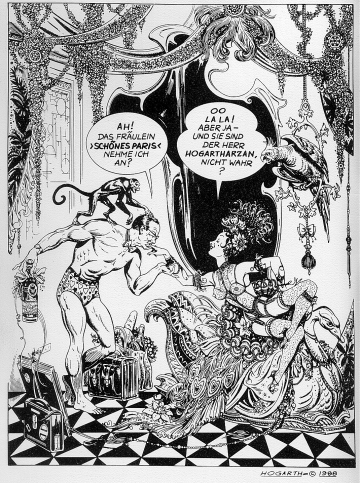
Thanks to Ron de Laat
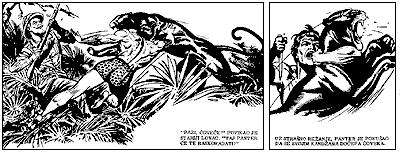
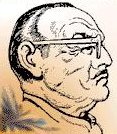
Burne Hogarth
(December 25, 1911 - January 28, 1996)
|
This interview appeared almost 20 years ago in Comics Scene Magazine, No. 5, September 1982. As we feel that far too little is known about this revered artist, we reprint it here in its entirety for the benefit of fans and scholars. Copyright Comics World Corp. 1982. |
![]() .
WEBJED:
BILL HILLMAN .
.
WEBJED:
BILL HILLMAN .![]()
Visit
our thousands of other sites at:
BILL
and SUE-ON HILLMAN ECLECTIC STUDIO
Some
ERB Images and Tarzan© are Copyright ERB, Inc.- All Rights Reserved.
All
Original Work ©1996-2006/2017/2023 by Bill Hillman and/or Contributing
Authors/Owners
No
part of this web site may be reproduced without permission from the respective
owners.